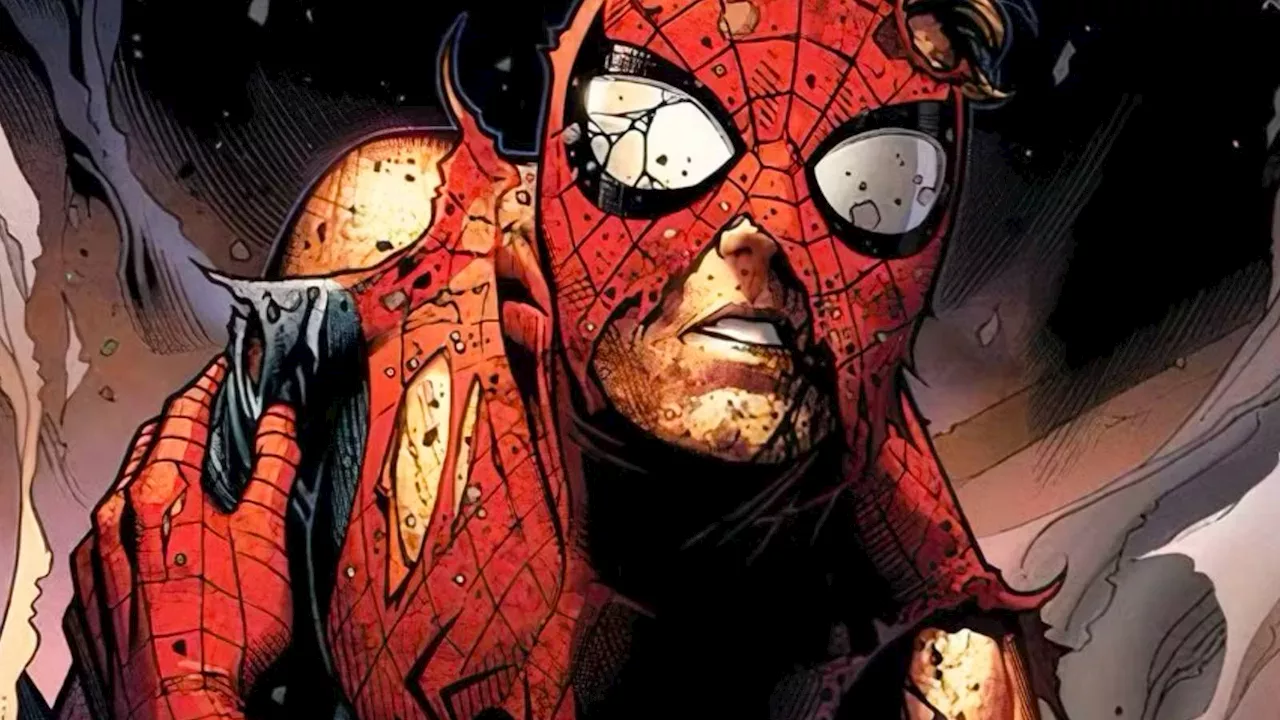Entertainment
Marvel Comics Revamps Morlun’s Origins in Spider-Man ’94 Series

Marvel Comics has redefined the origins of a significant Spider-Man villain, Morlun, in the recently launched comic series, Spider-Man ’94. This new narrative marks a pivotal shift, bringing Morlun, who was introduced in 2001’s Amazing Spider-Man #30, into the animated series’ continuity, which has not featured him until now. The release of Spider-Man ’94 has reconnected beloved characters Peter Parker and Mary Jane Watson, who has just escaped a time vortex that trapped her during the series’ conclusion.
In Spider-Man ’94 #3, penned by J. M. DeMatteis and illustrated by Jim Towe, Morlun’s origins have been extensively revised. Originally depicted as a formidable psychic vampire and a member of the Inheritors, a clan of vampires that targeted spider-totems across the multiverse, Morlun’s backstory has taken on new depth. This transformation adds layers to his character, moving beyond the simple portrayal of a hunger-driven villain.
Morlun’s new narrative reveals that he was once a prince who spent centuries defending against a horde of hybrid creatures he refers to as “totems.” By draining the life force of these beings, Morlun extended his own life and gained extraordinary abilities. His survival over millennia led him to establish the Sims Foundation, where he now operates under the guise of its CEO, Ezekiel Sims. This character parallels the original Ezekiel Sims from the main Marvel canon, who aimed to protect Spider-Man from Morlun’s predatory instincts.
Morlun’s motivation has shifted significantly in this latest iteration. Rather than simply seeking to satiate his hunger, he believes that his actions are necessary to save humanity. This perspective adds a new dimension to his character, portraying him as a twisted savior with a misguided sense of purpose.
Additionally, the new series introduces Morlun’s advanced cloning technology, enabling him to create short-lived clones of himself. This development leads to the creation of his son, Kaine, drawing parallels with the classic villain Miles Warren, also known as The Jackal, who was infamous for creating clones during Spider-Man’s “Clone Saga.” This connection enriches the storyline, merging past and present narratives within the Spider-Man universe.
As Spider-Man ’94 continues, readers can anticipate further revelations about this reimagined version of Morlun. His self-perception as humanity’s savior, coupled with his need to feed on Spider-Man’s rare life force, sets the stage for an engaging and complex storyline that diverges from traditional villain archetypes.
The evolution of Morlun’s character illustrates Marvel’s commitment to revitalizing its iconic figures while exploring deeper themes of morality and redemption. As the series progresses, fans are keenly interested in how these developments will unfold and what they mean for the broader Spider-Man saga.
-

 Lifestyle4 months ago
Lifestyle4 months agoLibraries Challenge Rising E-Book Costs Amid Growing Demand
-

 Sports4 months ago
Sports4 months agoTyreek Hill Responds to Tua Tagovailoa’s Comments on Team Dynamics
-

 Sports4 months ago
Sports4 months agoLiverpool Secures Agreement to Sign Young Striker Will Wright
-

 Lifestyle4 months ago
Lifestyle4 months agoSave Your Split Tomatoes: Expert Tips for Gardeners
-

 Lifestyle4 months ago
Lifestyle4 months agoPrincess Beatrice’s Daughter Athena Joins Siblings at London Parade
-

 World4 months ago
World4 months agoWinter Storms Lash New South Wales with Snow, Flood Risks
-

 Science4 months ago
Science4 months agoTrump Administration Moves to Repeal Key Climate Regulation
-

 Science3 months ago
Science3 months agoSan Francisco Hosts Unique Contest to Identify “Performative Males”
-

 Business4 months ago
Business4 months agoSoFi Technologies Shares Slip 2% Following Insider Stock Sale
-

 Science4 months ago
Science4 months agoNew Tool Reveals Link Between Horse Coat Condition and Parasites
-

 Sports4 months ago
Sports4 months agoElon Musk Sculpture Travels From Utah to Yosemite National Park
-

 Science4 months ago
Science4 months agoNew Study Confirms Humans Transported Stonehenge Bluestones









